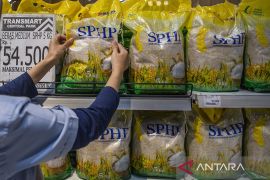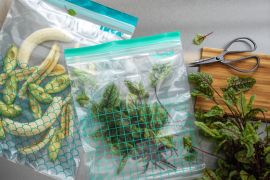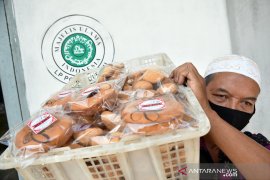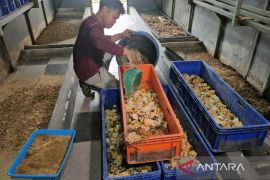When confirmed by ANTARA here on Saturday, Adi asked regional leaders to coordinate with NFA if they need a supply of strategic food commodities that are lacking and become a cause of inflation growth in their regions.
He appreciated the regions that had mobilized food between regions so as to prevent price hikes and reduce the inflation rate.
He stated the readiness to assist regions in food mobilization as an effort to maintain stocks and price stability.
"If food commodity prices are under control, the inflation reduction target in November can be achieved as happened in October, where the inflation rate was 5.71 percent, down 0.25 percent compared to September," he said.
Adi believes that food mobilization from surplus areas to deficit areas can maintain the availability and stabilization of food commodity prices in the regions, especially the outermost and border areas.
He also said that the disclosure of information to be able to contact NFA directly had also been conveyed before the participants of the Limited Coordination Meeting of Central Inflation Control Team (TPIP) and Regional Inflation Control Team (TPID) for Sulawesi, Kalimantan, Papua and Maluku regions.
They consisted of 15 representatives of the governor with the Coordinating Minister for Economic Affairs Airlangga Hartarto, in Pontianak, West Kalimantan, on Friday.
"Here is Deputy 1 for Food Availability and Stabilization of NFA. If your area has stock constraints, we can help mobilize stock from surplus areas to deficit areas," he said.
Adi said that as of Friday, NFA had helped mobilize 5 thousand tons of a number commodities such as rice, red onions, curly chilies, red chilies, corn, broiler eggs, purebred chicken meat, consumption sugar, cooking oil, live birds or live chickens, and live cows.
Out of these commodities, corn became the commodity with the most volume, around 3,500 tons.
"This action is carried out on a business to business (B2B) through synergy between NFA, local government, farmers and breeders associations, and business players," Adi explained.
This food mobilization is in line with the study of the Ministry of Economic Affairs, which stated that the main challenges to controlling inflation in border areas need to be a focus, especially related to smooth distribution, availability of infrastructure, and availability of supplies.
"To increase the volume of food distribution between regions, we continue to communicate with the Ministry of Transportation in order to optimize the Sea Toll," he said.
"We have made an inventory of the food potential of the border areas so that the ships carrying food to the areas can return to bring local food," he said further.
Related news: Food supply stability can control inflation: Finance Ministry
Related news: BI targeting to reduce inflation to 3.61% in 2023
Related news: Need to change mindset to improve investment climate: ministry
Translator: Linna Susanti, Katriana
Editor: Azis Kurmala
Copyright © ANTARA 2022












